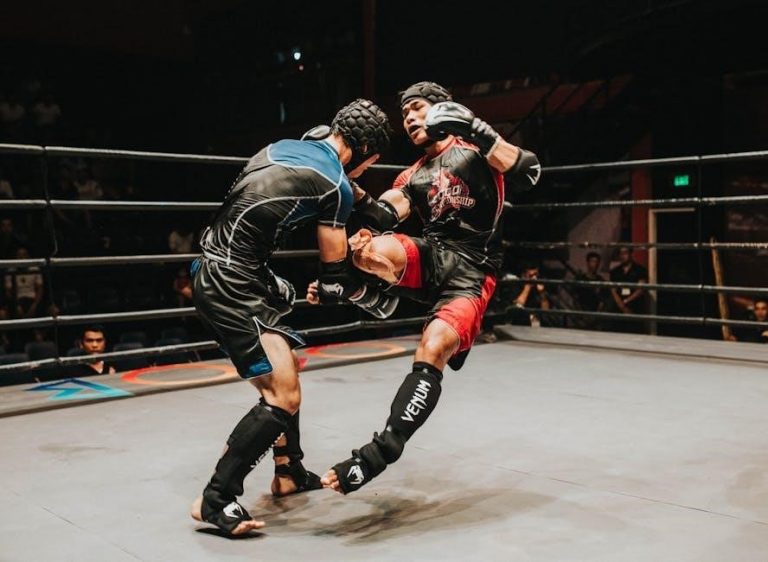
Champion tags in League of Legends categorize champions by their roles, abilities, and playstyles, helping players understand their strengths, weaknesses, and strategic contributions to team compositions.
1.1 What Are Champion Tags?
Champion tags in League of Legends are labels assigned to champions based on their primary roles, abilities, and playstyles. These tags help players quickly identify a champion’s strengths and how they contribute to a team. For example, tags like “Fighter” or “Mage” indicate a champion’s primary function in combat. Tags are used to categorize champions into broader roles or sub-roles, such as “Tank,” “Marksman,” or “Support,” making it easier for players to understand their purpose in team compositions. These tags also guide strategies, such as item builds or matchup decisions. By categorizing champions, tags simplify the process of selecting the right champion for a specific role or playstyle, ensuring better synergy and coordination during gameplay. They are essential for both new players learning the basics and experienced players refining their strategies.
1.2 Importance of Champion Tags in League of Legends
Champion tags play a crucial role in League of Legends by helping players understand a champion’s role, abilities, and strategic contributions. These tags simplify the process of selecting champions for specific team compositions, ensuring better synergy and coordination. By categorizing champions into roles like “Tank,” “Marksman,” or “Support,” tags enable players to make informed decisions about matchups, item builds, and gameplay strategies. They also assist in identifying counter-picks and optimizing team synergy, which are essential for competitive play. Additionally, champion tags help new players learn the fundamentals of the game by providing a clear understanding of each champion’s purpose. Overall, champion tags are a vital tool for both casual and professional players, enhancing their ability to adapt to the ever-changing meta and improve their gameplay.

1.3 Classification of Champion Tags
Champion tags in League of Legends categorize champions based on their roles, abilities, and playstyles, helping players understand their in-game purpose. These tags are divided into primary and secondary categories, such as Tank, Fighter, Assassin, Mage, Marksman, Support, and Enchanter. Each tag reflects a champion’s primary function, like dealing damage, providing utility, or absorbing damage. Some tags overlap, allowing for hybrid roles, while others specify unique abilities, such as Skirmisher for dueling champions or Juggernaut for those with sustained damage potential. This classification system aids in team composition, strategy, and decision-making during champion selection. By understanding these tags, players can better identify how champions fit into the overall game plan and optimize their picks for success. This system is regularly updated to reflect balance changes and new champion releases, ensuring it remains relevant to the current meta.

Understanding Champion Roles
Champion roles define a champion’s primary function in the game, such as dealing damage, tanking, or supporting allies. These roles guide team composition and strategic decision-making effectively.
2.1 Primary Roles in League of Legends
The primary roles in League of Legends are designed to categorize champions based on their core functionalities. These roles include Top Lane, Jungle, Mid Lane, ADC, and Support. Each role has distinct responsibilities: Top Laners are often tanky or bruisers, focusing on absorbing damage and engaging in early-game skirmishes. Junglers rely on monster camps to build power and gank lanes, while Mid Laners typically prioritize ability power and roaming to dominate the map. ADCs (Attack Damage Carries) are late-game damage dealers, relying on critical strikes and item scaling. Supports, on the other hand, focus on enabling their team through crowd control, healing, and protection, often sacrificing personal damage for utility. Understanding these roles is crucial for effective team composition and strategy.
2.2 How to Choose the Right Champion for Your Role
Choosing the right champion for your role involves considering your playstyle, the current meta, and team composition needs. Start by identifying your strengths and preferences—do you excel at dealing damage, tanking, or providing utility? Next, analyze the meta to see which champions are viable in your role. For example, if you’re a Top Laner, bruisers like Darius or Jax might dominate, while Mid Laners could favor assassins like Fizz or Sylas. Consider synergies with your teammates and counterpicks to the enemy team. Watch champion guides, pro matches, and high-level streamers to learn mechanics and strategies. Finally, practice champions in custom games to gauge comfort and effectiveness before committing to ranked play. Balancing personal enjoyment with strategic value ensures optimal champion selection.
2.3 Synergies Between Champions and Roles
Synergies between champions and roles are crucial for effective team composition and strategy. For example, pairing a tank like Leona with an ADC like Jinx creates a powerful engage-and-deal-damage synergy. Similarly, a mid laner with strong roam potential, such as Zoe, can synergize with a jungler like Sejuani to dominate side lanes. Understanding these interactions ensures that each champion’s strengths are amplified while covering weaknesses. For instance, a support champion like Braum can protect a squishy ADC while also enabling aggressive plays with his unbreakable ultimate. Synergies also extend to counterplay; for example, picking a mobile assassin like Fizz to counter a team with multiple squishy, high-priority targets; Learning these combinations enhances teamwork and overall game impact, making it a vital aspect of strategic play.

Game Phases and Champion Suitability
Champions excel in specific game phases: early-game dominators, mid-game transitioners, and late-game scalers. Understanding their strengths in each phase ensures optimal team composition and strategic execution.
3.1 Early Game Champions and Their Impact
Early game champions are designed to dominate the initial stages of League of Legends through strong lane presence, aggressive playstyles, and ability to secure early objectives. These champions often excel at harassing, last-hitting minions, and setting up kills for their team. Fighters, skirmishers, and assassins like Riven or Lee Sin are prime examples, as they thrive in one-on-one situations and can quickly snowball the game. Their impact is crucial, as controlling the early game often leads to a significant gold and experience advantage. Additionally, early game champions can pressure key objectives like Dragon and Rift Herald, further amplifying their influence. Proper utilization of these champions can set the tone for a victorious match, making them indispensable in competitive play.
3.2 Mid Game Champions and Transition Strategies
Mid game champions excel during the transition phase, typically between 15-30 minutes, where roaming, objective control, and team fights become pivotal. These champions often balance early-game potential with scaling capabilities, making them versatile in securing advantages. Mages like Azir or assassins like Akali shine in this phase, leveraging their abilities to manipulate battles and secure key objectives. Bruisers such as Riven or Darius also thrive, using their sustained damage and tankiness to dominate skirmishes. Transition strategies involve prioritizing vision control, securing Dragon and Baron, and effectively itemizing to maintain power. Proper execution during this phase can dictate the flow of the game, setting up for a strong late-game transition. Champions that excel here often determine the momentum, making their selection and playstyle crucial for success.

3.3 Late Game Champions and Scaling Potential
Late game champions are designed to dominate the later stages of League of Legends, typically after the 30-minute mark. These champions often have strong scaling abilities, allowing them to grow more powerful as the game progresses. They rely on items and levels to unlock their full potential, making them highly impactful in prolonged engagements. Champions like Jinx, Kai’Sa, or Tristana excel in the late game due to their ability to scale with attack damage, ability power, or critical strike chance. Their playstyle revolves around securing gold and experience early to late-game transitions effectively. Proper itemization and positioning are crucial for these champions, as they often serve as the primary damage dealers in team compositions. Late game champions are carried by their team in the early stages but become nearly unstoppable in the final moments of the match.

Advanced Champion Strategies
Mastering champion mechanics, optimizing builds, and making impactful macro decisions are key to advanced strategies, enhancing overall performance and decision-making in competitive League of Legends play.

4.1 Mastering Champion Mechanics and Abilities
Mastering champion mechanics and abilities is crucial for maximizing effectiveness in League of Legends. Each champion has unique abilities that define their playstyle and role in team fights. For example, Riven excels as a skirmisher with her mobility and burst damage, while Xayah relies on her feather mechanics to deal sustained damage. Understanding these abilities, including cooldowns, ranges, and synergies, allows players to execute strategies effectively. Practicing mechanics in custom games or brush up on champion-specific guides can significantly improve gameplay. Additionally, staying updated on champion reworks and balance changes ensures adaptability to the meta. As shown in recent updates, reworks like those for certain champions aim to refine their roles, making it essential to relearn their mechanics. By mastering these elements, players can elevate their performance and contribute more effectively to their team’s success.
4.2 Item Builds and Their Impact on Champion Performance
Item builds significantly influence a champion’s performance, as they enhance abilities, damage output, and survivability. For instance, Riven benefits from items like Blade of the Ruined King and Black Cleaver to boost her burst damage and mobility. Similarly, Xayah’s feather mechanics are optimized with Krishna’s Dagger and Lord Dominik’s Regards for sustained damage. Adaptive itemization based on the game state ensures champions remain effective, whether focusing on offense, defense, or utility. The meta shifts with patches, altering optimal builds, such as recent changes in Patch 14.16. Staying updated on tier lists and patch notes helps players adjust their itemization strategies accordingly. By tailoring builds to match the game’s progression and team composition, players can maximize their champion’s potential and contribute effectively to securing victories. This adaptability is key to mastering League of Legends and staying competitive in the ever-changing meta.
4.3 Macro Gameplay Decisions for Champion Success
Macro gameplay decisions are crucial for champion success, involving strategic choices like map control, objective prioritization, and resource management. For example, diving into enemy territory with mobile champions like Riven or Jinx requires precise timing and vision control. Roaming effectively with high-impact champions ensures pressure across multiple lanes. Split pushing, often seen with champions like Fiora, can force enemy responses and create opportunities for the team. Decisions like securing Dragon, Baron, or Elder Dragon can swing the game’s momentum. Itemization plays a key role, as seen in recent patches like Patch 14.16, where adaptive builds enhance scaling potential. Staying updated on tier lists and patch notes helps players align their strategies with the meta, ensuring optimal decision-making for champion success. Balancing individual mechanics with broader strategic goals is vital for achieving victory.

Champion-Specific Guides
Champion-specific guides provide in-depth strategies for mastering individual champions, covering unique playstyles, builds, and matchups. These guides help players optimize performance and adapt to the evolving meta effectively.
5.1 Popular Champions and Their Unique Playstyles
Popular champions in League of Legends often rise to fame due to their versatility, power, and engaging mechanics. For instance, Riven is renowned as a formidable fighter-skirmisher, excelling in close combat with her blade and acrobatic skills. Her playstyle revolves around aggressive trades and precise timing of abilities. Meanwhile, Xayah has gained traction for her dynamic gameplay with abilities like Blade of the Ruined King and Deadly Flourish, making her a strong pick in the ADC role. Jinx, the Loose Cannon, is celebrated for her high damage and chaotic playstyle, particularly when played as ADC. Each of these champions offers unique mechanics and strategies, making them appealing to players seeking diverse gameplay experiences.
5.2 Countering Common Champions in Different Roles
Countering common champions requires understanding their strengths and exploiting their weaknesses. For example, Riven, a dominant fighter-skirmisher, can be countered by champions with strong ranged abilities or mobility to avoid her aggressive playstyle. Jinx, a high-damage ADC, is often countered by tanky champions who can withstand her attacks and close the distance. Similarly, Akali, a stealthy assassin, can be countered by picks like Thresh or Leona, who excel at locking down targets and preventing her from engaging. In each role, identifying the meta picks and adapting your strategy is crucial. This involves banning problematic champions, building specific items, or focusing on playstyles that directly counter theirs. Effective counter picks can shift the balance of power in your favor, making it easier to secure victories in competitive matches.
5.3 Top Champion Picks for Current Meta
With the ever-changing meta, certain champions consistently rise to the top as powerful picks. In Patch 14.16, champions like Lee Sin, Thresh, and Ezreal dominate their respective roles due to their versatility and impact. Jungle picks such as Vi and Sejuani remain strong, while mid laners like Sylas and Lux continue to be viable. ADCs like Jinx and Zeri are favored for their scaling potential and ability to carry games. In the top lane, Akali and Fiora are popular for their aggressive playstyles. Additionally, the new champion Aurora, a skirmisher mage, has made waves with her unique abilities and flexibility. Staying updated with tier lists and patch notes is essential to adapt to the meta and maximize your champion pool’s effectiveness. By focusing on these top picks, players can climb ranks and stay competitive in the current season.

Optimizing Champion Builds
Optimizing champion builds involves rune path selection, mastery choices, and adaptive itemization based on the game state to maximize effectiveness and versatility in different scenarios.
6.1 Rune Path Optimization for Champions
Rune path optimization is crucial for maximizing a champion’s potential. Each rune path—Precision, Domination, Sorcery, Resolve, and Inspiration—offers unique keystones tailored to specific roles. Fighters and assassins often opt for Precision or Domination to enhance damage and burst potential. Mages and ability power carries typically favor Sorcery for increased ability power and cooldown reduction. Resolve is ideal for tanks and bruisers, providing survivability and crowd control. Inspiration is versatile, offering utility for champions needing extra mobility or resource generation. Secondary rune paths further refine builds, adding adaptability. Understanding synergies between runes and champion abilities ensures optimal performance. Adapting rune choices based on the meta and enemy composition can significantly impact gameplay success. Proper rune path optimization enhances effectiveness in various roles, making it a cornerstone of champion builds.
6.2 Masteries and Summoner Spells for Maximum Impact
Masteries and summoner spells are essential for enhancing a champion’s effectiveness in League of Legends. Masteries provide stat boosts and utility, such as increased attack damage or improved ability cooldowns, tailored to a champion’s role. Summoner spells like Smite, Teleport, or Ignite offer critical tools for initiating fights, securing objectives, or escaping danger. Choosing the right combination of masteries and summoner spells ensures a champion’s abilities are maximized, complementing their rune builds and itemization. For example, fighters often benefit from cooldown reduction masteries, while mages may prioritize ability power. Summoner spells like Baron Nashor or Dragon’s Wrath can also be game-changing in late-game scenarios. Adapting these selections based on the meta and enemy composition further enhances their impact, making them a vital part of any champion’s strategic setup.
6.3 Adaptive Itemization Based on Game State
Adaptive itemization is crucial for maximizing a champion’s effectiveness throughout different stages of the game. Early-game items often focus on survival and utility, such as Doran’s Blade or Cloth Armor, to ensure champions can farm safely. As the game progresses, players shift toward core items that enhance their champion’s primary abilities, like Rabadon’s Deathcap for mages or Trinity Force for fighters. Late-game itemization prioritizes scaling and situational needs, such as building resistance to counter enemy threats or adding burst damage. Flexibility is key, as the meta and enemy composition can dictate alternative builds, like Mejai’s Soulstealer for ability power carry or Guardian Angel for resilience. Adaptive itemization ensures champions remain impactful, regardless of the game’s progression or teamfight dynamics.

Resources and Tools
Discover essential resources like League of Legends databases, tier lists, and community guides to enhance your champion knowledge and gameplay strategy effectively.
7.1 League of Legends Champion Database and Tools
League of Legends champion databases and tools provide comprehensive insights into champions, their abilities, and optimal builds. These resources help players analyze stats, strategies, and synergies to enhance gameplay.
Popular tools like OP.gg and Mobafire offer detailed champion guides, item builds, and matchup statistics. They also provide real-time data on win rates and trending strategies in the current meta.
Additionally, resources like U.gg and Champion.gg focus on champion synergies, counter picks, and performance metrics. These platforms empower players to make informed decisions and adapt to the ever-changing landscape of the game.
Official Riot Games resources and third-party sites also offer champion skin databases, allowing players to explore cosmetic options and stay updated on new releases. These tools collectively enhance the player’s ability to master champions and improve overall performance.
7.2 Tier Lists and Patch Notes for Informed Decisions
Tier lists and patch notes are essential resources for League of Legends players, providing insights into champion viability and balance changes. Tier lists rank champions based on their performance in the current meta, helping players identify strong picks for climbing ranks or adapting to the latest trends.
Patch notes detail updates to champions, items, and systems, revealing buffs, nerfs, and new content. By analyzing these, players can adjust their strategies and champion pools to stay competitive. For example, Patch 14.16 introduced significant changes, shifting the meta and influencing tier rankings.
These resources empower players to make informed decisions about champion selections, item builds, and gameplay approaches. Staying updated with tier lists and patch notes ensures players remain adaptable and effective in the ever-evolving League of Legends landscape.
7.3 Community Guides and Tips for Champion Mastery
Community guides and tips are invaluable for mastering League of Legends champions, offering in-depth insights and strategies from experienced players. These resources often include detailed champion matchups, optimal builds, and gameplay tips tailored to specific roles and playstyles.
For example, guides for champions like Riven and Xayah provide step-by-step instructions on how to maximize their potential in various scenarios. Additionally, community-driven content covers advanced topics like rune path optimization and adaptive itemization based on game state.
Players can also find tier lists and patch note analyses, which help them stay updated on the current meta and balance changes. These resources empower players to refine their skills, experiment with new strategies, and climb the ranks effectively.
